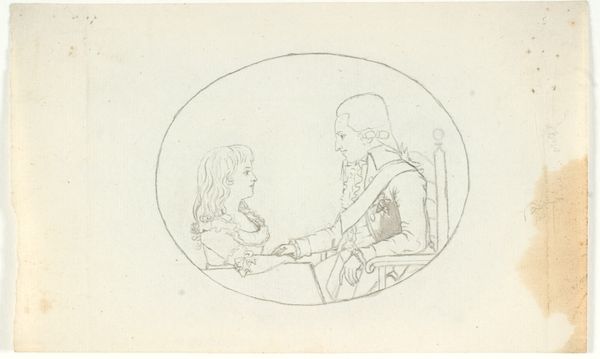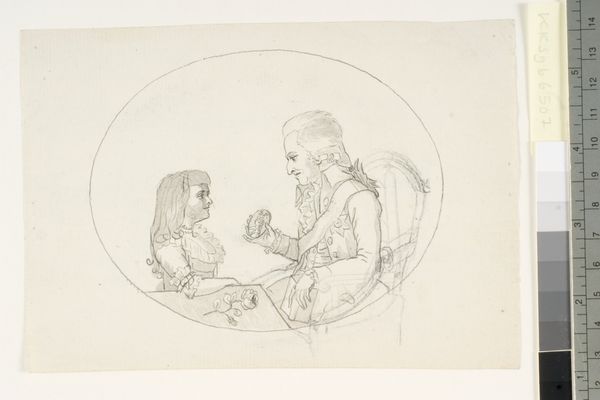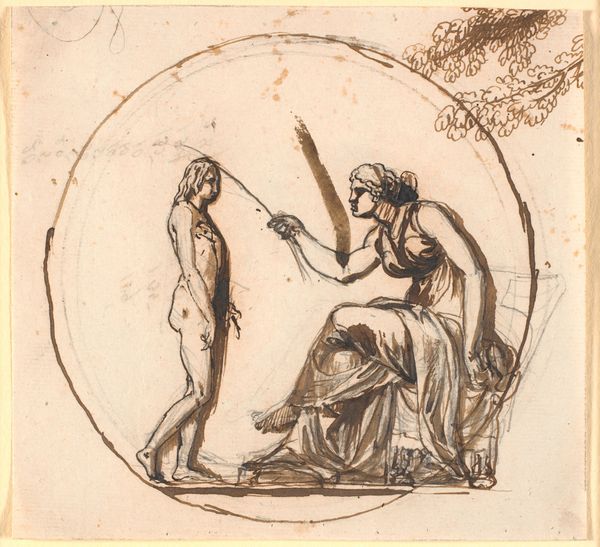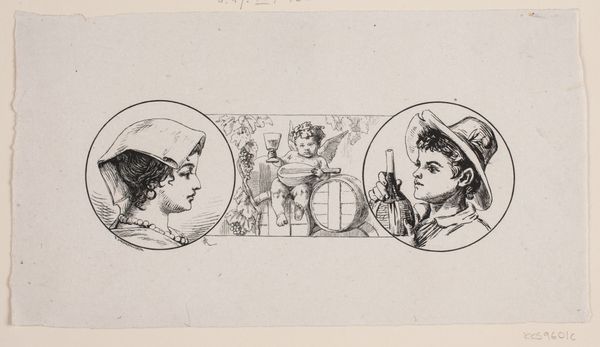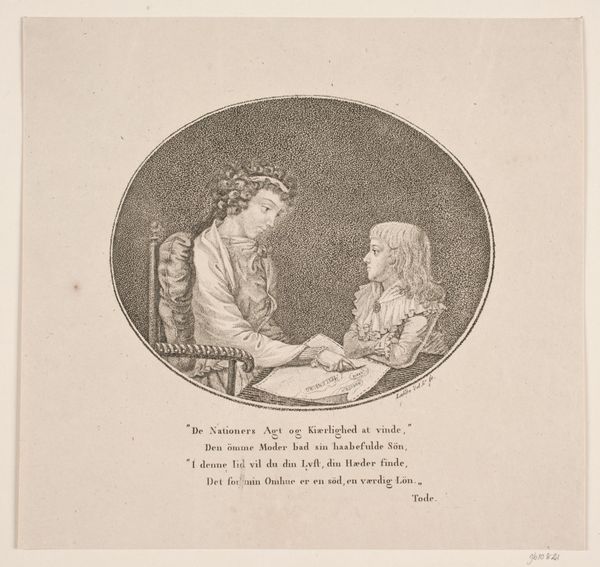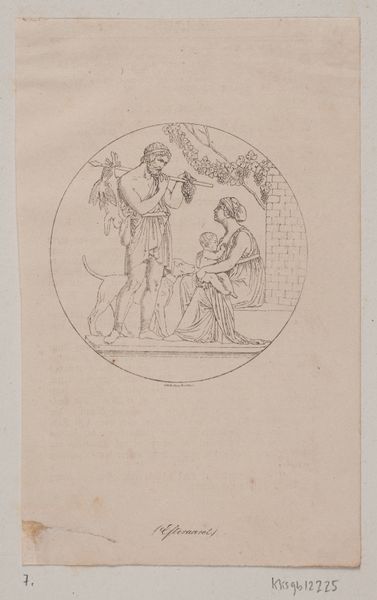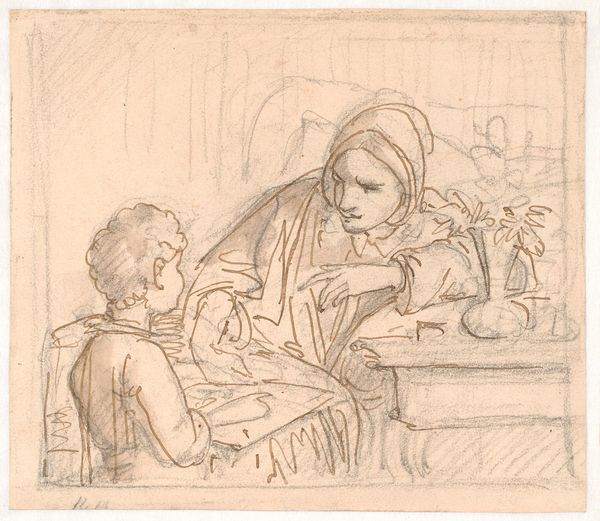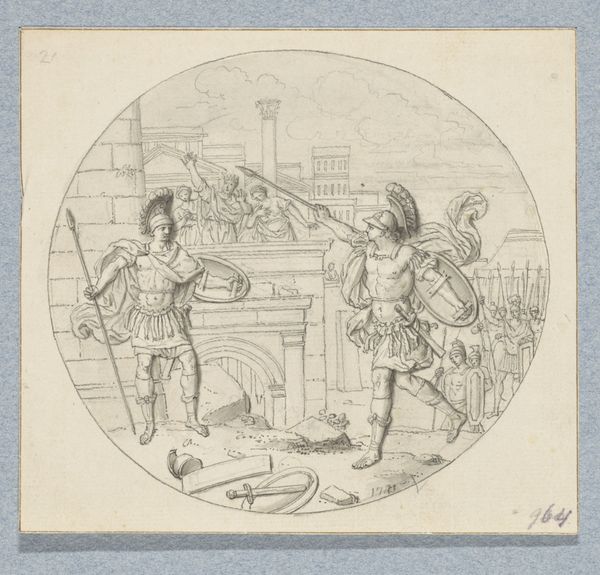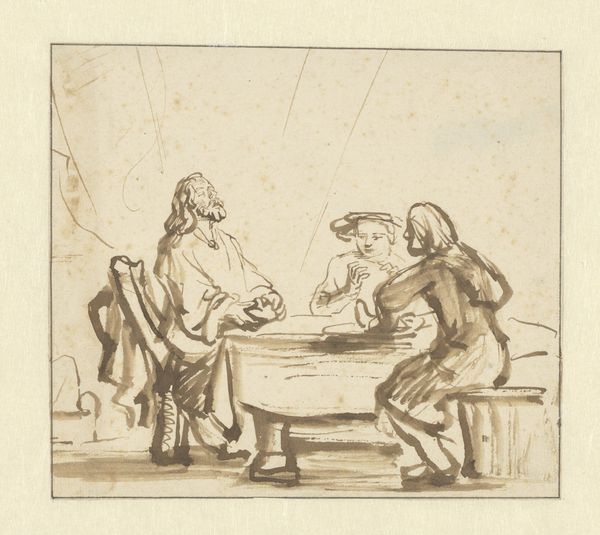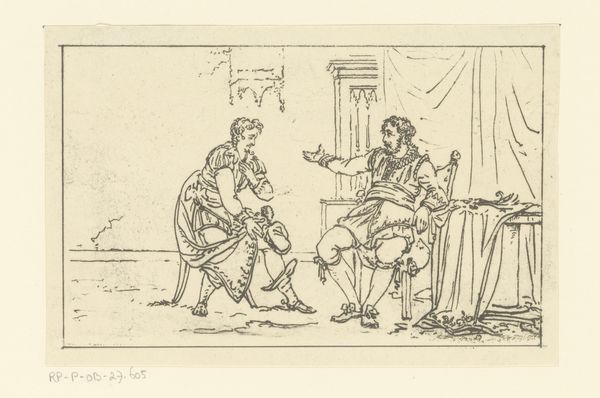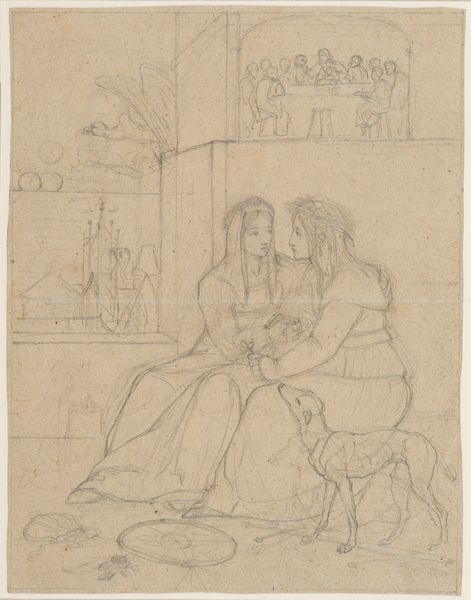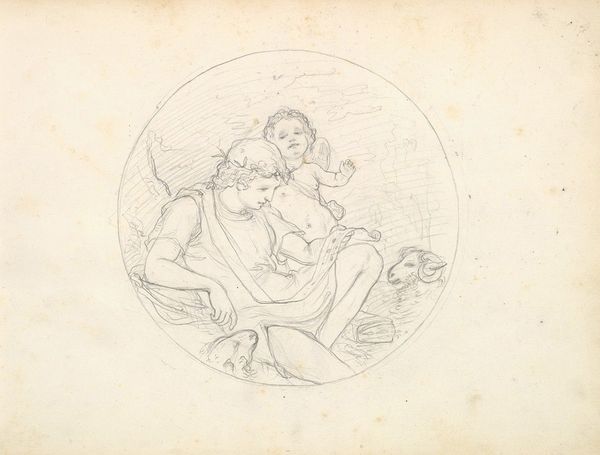
Arveprins Frederik med arveprinsen (Chr. VIII) viser et portræt af den afdøde arveprinsesse Sofie Frederikke 1795
drawing, ink, pen
portrait
drawing
ink drawing
pen sketch
ink
romanticism
pen
history-painting
Dimensions: 112 mm (height) x 188 mm (width) (bladmaal)
Curator: Here we have Gerhard Ludvig Lahde's pen and ink drawing from 1795 entitled "Arveprins Frederik med arveprinsen (Chr. VIII) viser et portræt af den afdøde arveprinsesse Sofie Frederikke". Editor: There's a touching fragility to this drawing. It feels incomplete, which lends itself to the raw emotion of loss and memory. Curator: It’s certainly imbued with pathos. The historical context illuminates that further. The drawing depicts Hereditary Prince Frederik and his son, Christian VIII, being presented with a portrait of the late Hereditary Princess Sofie Frederikke. Editor: Seeing it as a memento mori changes everything. The formal presentation of the portrait... it's not just a historical scene; it speaks to the political theater of mourning. Who was this Sofie Frederikke in her own right, beyond her role within the Danish monarchy? Curator: Unfortunately, her individual voice is largely absent from the historical record. However, we can infer the socio-political implications of her death. As a princess, her life was intrinsically tied to the dynasty’s continuity and stability. This drawing subtly underscores the pressures surrounding succession. Editor: That pressure seems concentrated in the hands holding the portrait— the burden of legacy. And the style of drawing – so immediate, like a quickly captured moment – suggests a hidden world behind royal facades, one marked by private grief. Curator: Indeed. Lahde, through this medium, bridges the gap between the public persona and the private experience, creating a compelling dialogue about loss and representation. The deliberate presentation creates a kind of hagiography of Danish royalty. Editor: It is that tension—between formal presentation and the raw scratch of ink—that intrigues me most. We're invited into the performance of royal grief while still being confronted with its messy human core. It begs us to remember those women excised from history as they struggle against oppressive forces and rigid social expectations. Curator: Well, thinking about that, the romantic style and history-painting theme highlight key social structures embedded within the narrative. Editor: Absolutely, viewing those romantic brushstrokes through a critical, contemporary lens allows us to recognize art as a medium that reproduces ideologies which should then be problematized in modern discussions. Curator: Looking back, this exploration has revealed how even seemingly straightforward historical depictions can reflect intricate webs of personal emotion, familial expectations, and social power dynamics. Editor: Right, the drawing functions as more than a static artifact. It opens pathways into a more intricate comprehension of the historical milieu and resonates within present discourses, reminding us that historical awareness encourages our activism.
Comments
No comments
Be the first to comment and join the conversation on the ultimate creative platform.
